
Inhalants: What Parents Need to Know ALSO » The Benefits and Dangers of Boredom » The Benefits of Fine Arts for Mental Health » The Harms of Self-Medicating » Helping Kids Find Healthy Coping Skills MARCH–MAY 2024 | www.tlc4cs.org




dowcreditunion.org/community
Credit Union is proud to support The Legacy Center's mission to
trajectory
people’s lives
they help them reach their full potential. Multipliers for Good Midland - 600 E Lyon Rd
- 5420 Gratiot Rd
Dow
change the
of
as
Saginaw



www.tlc4cs.org | YC MAGAZINE | MARCH–MAY 2024 1 INSIDE MARCH–MAY 2024 2 From the Director 5 Confessions from the Kitchen Table 10 Faces in the Crowd 11 40 Developmental Assets 12 Assets in Action 18 Q&A / By the Numbers 6 The Benefits and Dangers of Boredom 14 The Benefits of Fine Arts for Mental Health 16 The Harms of Self-Medicating 20 Helping Kids Find Healthy Coping Skills 23 Inhalants: What Parents Need to Know FEATURES IN EVERY ISSUE COVER PHOTO BY Floating Leaf Studios PRODUCED IN CONJUNCTION WITH TO ADVERTISE OR CONTRIBUTE Kathryn Tate, President/CEO (989) 496-1425 • (ktate@tlc4cs.org) PRINTED BY

ABOUT THE LEGACY CENTER
The Legacy Center changes the trajectory of people’s lives as we help them reach their full potential. We help our neighbors build the reading and language skills they need to succeed. We equip young people to make responsible choices. We are a local collaborative partner committed to increasing the impact of agencies in Midland County.
Follow The Legacy Center www.tlc4cs.org www.facebook.com/tlc4cs
Director FROM THE

We’re in the final stretch of the school year. The magazine committee felt it was important to give parents resources as they head into the summer because now is the time to get kids signed up for camps and make plans. Our feature article is a compilation of the pros/cons of boredom, but also some ideas for tweens over the summer. That’s a hard age because they’re usually too old for most camps, but not old enough to get a job. Lots of unsupervised time for youth can be a problem. With this in mind, be sure to check out the ads in this issue for some summer ideas for tweens and teens, including The ROCK and MCTV’s summer camps, as well as GADML’s summer programs!
We also wanted to discuss the dangers of youth selfmedicating. Our society has a ‘take a pill and make it better’ mentality. Unfortunately, our kids see that and think the same thing. The article about self-medicating dovetails with the one on helping kids find healthy coping skills. If they have the tools to help themselves deal with disappointment and adversity, they don’t need to turn to substances as a way to cope. Adults could learn a thing or two from this article as well.
Building on this theme, the committee’s resident teacher shared her expertise in the benefits of fine arts for mental health. We hear a lot about listening to music or doing something creative if we’re feeling down. It’s a free and healthy way to take care of our mental health. Kids and parents can both benefit from utilizing these techniques.
Because teens have more unsupervised time at home during the summer, the committee felt it was important to address inhalants. They are often found in the home and can lead to devastating consequences if kids experiment with them. It’s a good reminder to parents to securely store items that could be harmful to kids.
We hope this issue gives you ideas to prepare a safe and fun summer for your kids!
WANT TO GO GREEN?
We’re
2 MARCH–MAY 2024 | YC MAGAZINE | www.tlc4cs.org
LEGACY CENTER FOR COMMUNITY SUCCESS
Tate, President/CEO (989) 496-1425 ktate@tlc4cs.org 2417 Abbott Road, Midland, MI 48642
KATHRYN TATE THE
Kathryn
creating an email distribution option. Email tlc4cs@tlc4cs.org and provide your physical address and your email address to switch to electronic delivery.








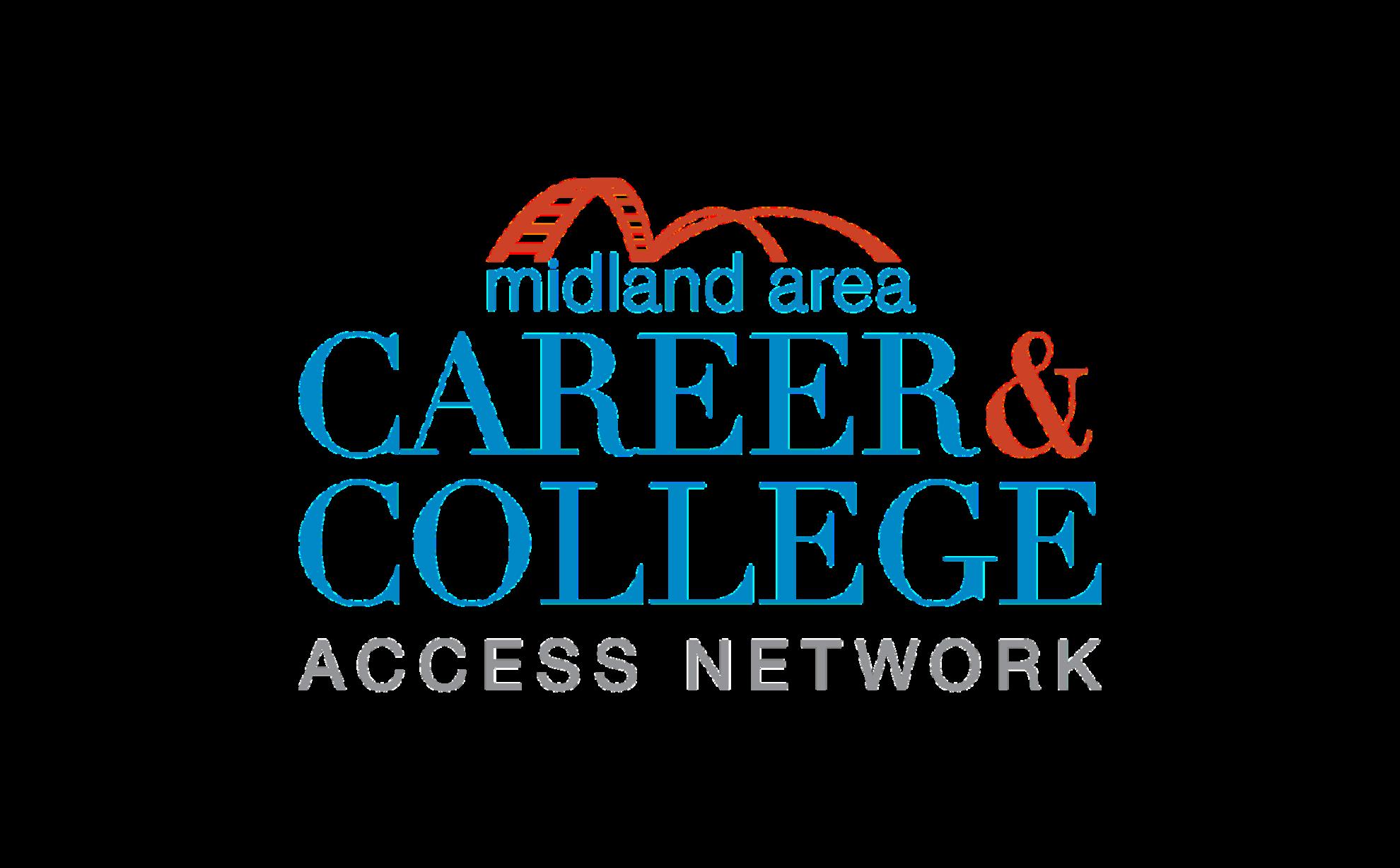
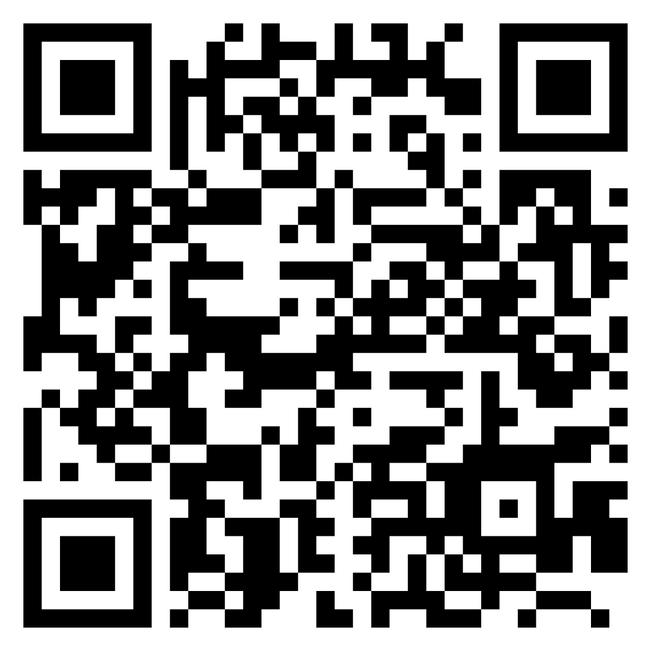

www.tlc4cs.org | YC MAGAZINE | MARCH–MAY 2024 3 Summer camp themes: Bot Survival Reduce, Reuse, Repeat Art is ART! The Wild Kingdom of Michigan Summer camp at The ROCK provides: Opportunity to build and develop life skills An environment to make new friends Fun activities to keep their minds sharp The ROCK is excited to be partnering with Delta College this summer! Contact Us Follow us: impact@therockc4yd.org 989-835-2542 therockc4yd.org Learn More Call (989) 495-9335 or admin@childrensgriefglbr.org SIGN UP! To register for group or to volunteer... GRIEF PEER SUPPORT MIDLANDFDN.ORG/INITIATIVE/CCAN We are here for your postsecondary success! Reach out to us to pursue resources to remove barriers to postsecondary education.




Childcare for children ages 12 and under
After-school and summer programs for youth and teens
Summer Food Service Program (SFSP) for youth ages 18 and under Dow College Opportunity Program to support and mentor high school students
Parent
4 MARCH–MAY 2024 | YC MAGAZINE | www.tlc4cs.org
locations
Preschool for three- and four-year-olds at fi ve
computer and Wi-Fi access Call us for details at 989.832.3256, or visit WMFC.org Located at 4011 West Isabella Rd. (M-20) 14 miles west of Downtown Midland Helping Families Grow and Thrive
education and social services Free
CONFESSIONS FROM THE KITCHEN TABLE
Supporting a Trans Child
She’s so lucky to have parents like you.
It’s baffling to hear that statement as a parent. As the mom of a transgender daughter, I know what well-intended friends are trying to say, but it’s an odd way to say it.
Is this statement applicable to everyone, or is it only meant for parents of children who deviate from societal norms? Would they say the same thing to parents of a child with neurological differences? A child who misbehaves? Struggles socially? Would they say it to the parent of a child fighting cancer? Would they say it to a child who is considered, for all intents and purposes, ‘normal’?”
More than anything, when people say, “She’s so lucky to have parents like you,” I want to turn my head to the side, show my confusion, and ask, “What’s the alternative?”
They mean, “She’s so lucky to have affirming parents.” I know this. But what I hear is, “She’s so lucky to have parents who love her even though she is trans.”
Again, what’s the alternative? Is parental love somehow... conditional?
As parents of a transgender child, we acknowledge the significant growth we have experienced in both our learning and unlearning. Like all parents, we have made colossal mistakes, but as parents of a trans child, we feel we’ve made many more. For years, it felt like we asked our child to write with their non-dominant hand. Despite being much more informed than we were ten years ago, breaking free from societal norms of gender is not a simple task. Asking society to break free with us feels hopeless at times. Lonely, almost always.
We’re not experts, but after almost a decade of parenting our transgender daughter, I wish I could go back in time to offer myself some advice. Here are five things I would say.
LET THEM
If your kid is exploring gender, let them. If they play with a truck instead of a Barbie, let them. If they want to be a princess instead of a superhero for Halloween, let them. Don’t let your insecurity rob your kid of joy. Trust me on this – it steals joy from you, too.
GET OVER IT
Speaking of your insecurities, get over it. My child noticed something as subtle as raised eyebrows when she twirled through our living room in a princess dress. If I questioned something as innocent as that, how could I ever expect her to confide in me about something even more significant? The root cause of insecurity is fear. Process that fear out of sight from your child. It’s up to you to be brave so your child can be a kid.
BELIEVE THEM
If your child tells you their gender is different from what they were assigned at birth, believe them. Ask questions. Be curious. You may not understand everything, but it is crucial to believe their experience. Parents often think their child is just “going through a phase.” Even if that is the case, love and affirm them through it until they tell you otherwise.
TRUST THE EXPERTS
And I hate to say it, but it’s not you. Start conversations about your child’s gender expression with a trusted and affirming professional as soon as possible. Center trans voices in your learning. If you are unsure if an expert is affirming, ask.
LOOK AHEAD
Brushing transness off as a phase means you lose valuable time to be proactive about their safety. Assume it’s not a phase and assess your child’s ability to be safe and affirmed in their school, doctor’s office, church, friend group, community, and state.
If I could wave a magic wand and remove gender as a barrier to my daughter’s existence, I would, but I would never change her. Eventually, society will know what we, as parents, now know. Until then, we’ll become forged by the fire of misunderstanding and use all we’ve learned to become better versions of ourselves. This is the ultimate gift my daughter gave us just by being herself. We’re so lucky to have a child like her. ■
www.tlc4cs.org | YC MAGAZINE | MARCH–MAY 2024 5
many of us the kitchen table represents the typical family experience. We have laughed while having family game night. We have cried over our children’s choices. We have blown out the candles on many cakes. We have argued our way out of doing the dishes. We have struggled through those “three more bites.” We have learned hard lessons and celebrated many deserved successes. One thing is for sure though—if our kitchen tables could talk, there would be plenty of stories! So often it is in relating to others’ stories that we realize there isn’t always one answer, or even a right answer. Parenting is hard work! If you have a story of lessons learned, we invite you to share it with our readers. Sometimes, knowing we aren’t the only ones struggling to find the answer is all the help we need. YOU CAN SUBMIT YOUR STORY AT: jblewett@tlc4cs.org
For
BOREDOM the benefits & dangers

BOREDOM dangers of
By STAFF

This is the time of year where parents start to fret over what to do with their children over the summer. If they’re young enough, summer camps may be the answer. If they’re old enough, specialized camps and jobs are probably the ticket. The question then comes up, “What’s too much or not enough to commit them to?” And what if your child is a tween – too old for camps, but not old enough to go get a job? There are several things to consider.
While boredom is often perceived as a negative experience, it can actually have several benefits for children:
CREATIVITY AND IMAGINATION: Boredom can stimulate creativity as it encourages children to explore their surroundings and come up with new ways to entertain themselves. When children are not provided with constant stimulation, they may tap into their imagination to create games, stories, or activities.
PROBLEM-SOLVING SKILLS: Boredom can prompt children to seek solutions to alleviate their boredom. This process of finding ways to engage themselves fosters problem-solving skills and encourages independent thinking.
SELF-DISCOVERY: When children are left to their own devices during moments of boredom, they have the opportunity to discover their interests and preferences. It allows them to reflect on what activities truly engage and fulfill them.
EMOTIONAL REGULATION: Boredom can help children learn to manage their emotions. They may experience mild frustration or restlessness initially, but over time, they can develop coping mechanisms and emotional regulation skills.
PATIENCE AND DELAYED GRATIFICATION: In a world filled with instant gratification, experiencing boredom teaches children patience and the ability to delay gratification. This can be a valuable skill in various aspects of life, including academic pursuits and relationships.
APPRECIATION FOR FREE TIME: Constant stimulation can lead to a lack of appreciation for free time. Boredom allows children to recognize and value unstructured time, which is essential for relaxation, reflection, and personal growth.
INDEPENDENCE: Boredom encourages children to be more independent in finding ways to entertain themselves. This independence is an important aspect of personal development and can contribute to self-reliance later in life.
REDUCED STRESS AND ANXIETY: Having scheduled and structured activities all the time
continued on page 9
www.tlc4cs.org | YC MAGAZINE | MARCH–MAY 2024 7
Understanding Teen Dating Violence
What is Teen Dating Violence (TDV)?
TDV is intimate partner violence that occurs in adolescent relationships and can include physical or sexual violence, psychological aggression, or stalking
This abuse can take place face-to-face or electronically, such as through texts, video calls, social media, etc
Warning Signs in Teenage Relationships
Excessive jealousy or insecurity
Explosive temper or unwarranted bouts of anger
Controlling or monitoring where you go, who you ’ re with, or who you talk to
Bullying, name-calling, or intentional humiliation
Consistently accusing you or blaming you for things
Vandalizing your property or threatening/causing physical violence
Pressuring for unwanted sexual activity or favors (inperson or electronically)

You are not alone Call: 877-216-6383
Text: 989-200-5122





8 MARCH–MAY 2024 | YC MAGAZINE | www.tlc4cs.org
Ages
1-5pm Loons
MCTV SUMMER
participants will learn
to
produce
content.
Create on-screen graphics “MCTV Camp was the highlight of my son’s summer!” -Parent of 2023 camper Learn More www.cityofmidlandmi.gov/mctv 989-837-3474 mctvinfo@midland-mi.org SUMMER 2024 And Much, Much More!
Summer video camp June 17-20, 1-5pm
11-17 Sports Broadcasting camp July 22-26,
Game Friday Night Ages 11-17
CAMPS Summer camp
how
create and
video
Operate cameras Edit videos
continued from page 7
can contribute to stress and anxiety in children. Boredom provides a break from the hustle and bustle, allowing them to relax and recharge.
IMPROVED ATTENTION SPAN: Constant exposure to stimuli, such as screens and structured activities, can contribute to a shortened attention span. Boredom provides an opportunity for children to practice sustained attention and focus.
While these benefits highlight the positive aspects of boredom, it’s important to note that excessive boredom or chronic lack of stimulation can have negative effects. Striking a balance between structured activities and unstructured downtime is key to fostering a healthy and well-rounded development in children.
Here are some potential dangers associated with prolonged boredom in kids:
NEGATIVE BEHAVIOR: Boredom can lead to negative behaviors as children may seek excitement or stimulation in inappropriate ways. This could include engaging in risky activities, breaking rules, or seeking attention through disruptive behavior.
INCREASED SCREEN TIME: When left unattended, bored children might turn to screens (TV, video games, etc.) as a quick and easy source of entertainment. Excessive screen time can have adverse effects on physical health, mental well-being, and academic performance.
LACK OF MOTIVATION: Prolonged boredom may lead to a lack of motivation, hindering a child’s willingness to engage in learning or other constructive activities. This can impact academic performance and personal development.
SOCIAL WITHDRAWAL: Boredom may contribute to social withdrawal, as children may find it easier to isolate themselves rather than seek out social interactions. This can impact their social skills and emotional development.
RISK OF DEPRESSION AND ANXIETY: Persistent boredom can contribute to feelings of sadness, frustration, and anxiety in children. Lack of stimulation and engagement may lead to a sense of purposelessness, which can affect mental health.
UNHEALTHY HABITS: Boredom can be a contributing factor to the development of unhealthy habits, such as overeating or engaging in substance abuse, as children may turn to these activities to fill the void of boredom.
Encouraging a variety of activities, maintaining a routine that includes both structured and unstructured time, and fostering open communication with children can help mitigate the dangers associated with excessive boredom.
STUNTED DEVELOPMENT: Chronic boredom may hinder a child’s cognitive, emotional, and social development. Lack of stimulation and varied experiences during critical developmental stages can have longterm consequences.
It’s important for parents and caregivers to be aware of the signs of chronic boredom in children and to actively engage in providing a balanced and stimulating environment. Encouraging a variety of activities, maintaining a routine that includes both structured and unstructured time, and fostering open communication with children can help mitigate the dangers associated with excessive boredom. It’s all about finding a healthy balance between structured activities and allowing for unstructured, creative, and imaginative play
With summer around the corner, it’s important for parents to weigh the pros and cons. Here are some ideas to try to help keep teens, who are too old for camps but not old enough for a job, busy and productive over the summer.
PLAN A MEAL: Have each child (if there’s more than one in the family) decide on a dinner and then prepare it for the family once a week. This will take some planning as it will probably require a trip to the store. If they haven’t cooked before, it will be a good learning experience and life skill to have as well.
PLAN A FAMILY ACTIVITY: Have each child plan a family activity. This can
be a family outing or just an activity to do at home. This will help them use their creativity but also possibly share their passion for an activity that maybe the rest of the family doesn’t know about or doesn’t share their passion.
PLAN A CULTURAL ACTIVITY: Take the making a meal or planning a family activity one step further and have one or all children research about a location they’d love to travel to or a culture they’re interested in, come up with a meal from there and include an activity that families or children do as well.
VOLUNTEER: Youth can volunteer as junior counselors or helpers at camps that cater to younger children. If they’re an athlete, they can help out at soccer, football, cheer, basketball, etc. camps. If they enjoy the arts, they can help at music or art camps. This gives them additional life skills such as responsibility, conflict resolution, and being a role model.
ALTERNATIVE ACTIVITIES: Check with local churches or the library for summer activities they have planned. There may be volunteer opportunities there as well.
OUTSCHOOL: Check out Outschool.com. It’s a website with a ton of classes covering a variety of topics. It could provide some additional learning over the summer to get a head start on next year, or topics that are just of interest. There is a cost, but it’s fairly reasonable, and transportation isn’t an issue. It could be rewards for making good choices over the summer. There are also online clubs in a safe space for kids to collaborate on Minecraft, art, activities, etc.
CHORES: Summer is a great time to increase chores for kids since they most likely don’t have homework. If both parents work, leaving a list for them to choose from works well. These can include cleaning, yard work, laundry, taking the garbage out, walking the dog, etc.
JOB: While those under 15-16 usually can’t get a paid job, they can use their entrepreneurial spirit and provide services (to families they already know) such as babysitting or entertaining younger children while their parents work at home; yard work; dog poop clean up; or even volunteering to help out elderly neighbors or single moms.
For additional information on routines, which are important in the summer, visit ParentingMontana.org. It has resources based on the child’s age for not only addressing routines, but chores, responsibility, and many other behaviors ■
www.tlc4cs.org | YC MAGAZINE | MARCH–MAY 2024 9
Check out who’s standing out in our community.
IS THERE SOMEONE YOU’D LIKE TO NOMINATE?
Please email jblewett@tlc4cs.org and tell us why this individual has stood out in your crowd.

Dante Schmidt JEFFERSON MIDDLE SCHOOL, 8TH GRADE
Dante is an 8th-grade student at Jefferson Middle School. He loves to meet new people with whom he has shared interests. His biggest passions are drawing and animation. Dante loves many different types of comics and animation, but his absolute favorite is Teenage Mutant Ninja Turtles! Following this interest, he is an enthusiastic member of the Art Club at the ROCK. In the future, he wants to put his passion to work and become an animator!
Evelyn Davis NORTHEAST MIDDLE SCHOOL, 8TH GRADE
Evelyn is an 8th-grader at Northeast Middle School. Evelyn has a strong sense of what is morally right and wrong and is always ready to help a fellow Viking, teacher, or anyone with an outstretched hand. She is the type to cheer on a classmate with no support system or talk in the corner with anyone who just needs a listening ear. At Northeast, Evelyn stays busy running track, spending time at the ROCK, Rubik’s Cube Club, and Dungeons and Dragons Club. In her off time, you can find her practicing soccer or making bracelets. Evelyn hopes to one day be an interior designer.

Raven MacDonald MERIDIAN JUNIOR HIGH, 7TH GRADE

Raven is a passionate young artist who loves to create in any medium. She particularly enjoys drawing, designing with Legos, and sewing. Her favorite classes at school reflect her creative spirit and include art, ELA, and drama. Raven makes an effort to be helpful to others whenever she can. She likes helping staff at the ROCK and looking out for the other students. Raven is known for always sticking up for her brother! When she’s not creating or spending time at the ROCK, Raven can be found having fun outside or on her computer. Raven loves spending time with animals, especially her two black shorthair cats at home.
Abby Rainey & Arianah Rankin SHELTERHOUSE
Healing from the impacts of abuse can be difficult for children who may not have the vocabulary to express their feelings or process their trauma. Shelterhouse’s Abby Rainey, a Registered Play Therapist™, and Arianah Rankin, a certified trauma therapist, help young survivors cope with traumatic experiences so they can live happy and healthy lives free from violence and abuse. Abby and Arianah support young survivors through play therapy. Through puppet shows, art, drawing, and more, children process complex trauma, express tough emotions, and begin healing. Shelterhouse’s mission is to serve, heal, and empower survivors of domestic violence and sexual assault. Last year they served 911 clients including 249 children. Call 877-216-6383 or text 989-200-5122 for help.
Midland Area Youth Impact Partnership
The Youth Impact Partnership (YIP), an initiative of the Midland Area Community Foundation, is a collaborative committee that brings together every school district, educators, and youth-serving nonprofit organizations across Midland County. With a mission to promote the safety and well-being of the community, the Partnership focuses on cultivating empathy and kindness among youth through awareness, education, and collaboration. Youth Impact Partnership engages in youth-based programming to achieve its goals. Additionally, YIP trains members on topics and community resources for youth in Midland County. YIP relies on data from the 2021 Midland County Youth Study that promotes the 40 Developmental Assets and supports a unified approach to addressing the needs of youth more effectively, so all individuals and youth can thrive.


10 MARCH–MAY 2024 | YC MAGAZINE | www.tlc4cs.org




40 Developmental Assets are essential qualities of life that help young people thrive, do well in school, and avoid risky behavior.
Youth Connections utilizes the 40 Developmental Assets Framework to guide the work we do in promoting positive youth development. The 40 Assets model was developed by the Minneapolis-based Search Institute based on extensive research. Just as we are coached to diversify our financial assets so that all our eggs are not in one basket, the strength that the 40 Assets model can build in our youth comes through diversity. In a nutshell, the more of the 40 Assets youth possess, the more likely they are to exhibit positive behaviors and attitudes (such as good health and school success) and the less likely they are to exhibit risky behaviors (such as drug use and promiscuity). It’s that simple: if we want to empower and protect our children, building the 40 Assets in our youth is a great way to start.
Look over the list of Assets on the following page and think about what Assets may be lacking in our community and what Assets you can help build in our young people. Do what you can do with the knowledge that even through helping build one asset in one child, you are increasing the chances that child will grow up safe and successful. Through our combined efforts, we will continue to be a place where Great Kids Make Great Communities.
www.tlc4cs.org | YC MAGAZINE | MARCH–MAY 2024 11
40 DEVELOPMENTAL ASSETS Turn the page to learn more! The 40 Developmental Assets® may be reproduced for educational, noncommercial uses only. Copyright © 1997 Search Institute®, 615 First Avenue NE, Suite 125, Minneapolis, MN 55413; 800-888-7828; www.search-institute.org. All rights reserved. Scan the QR code to redeem your Mood t app. Don’t forget to select push noti cations to keep you on track! Tools and insights for your mental health. Download for free, compliments of CMHCM 24/7 Crisis Hotline: 800-317-0708
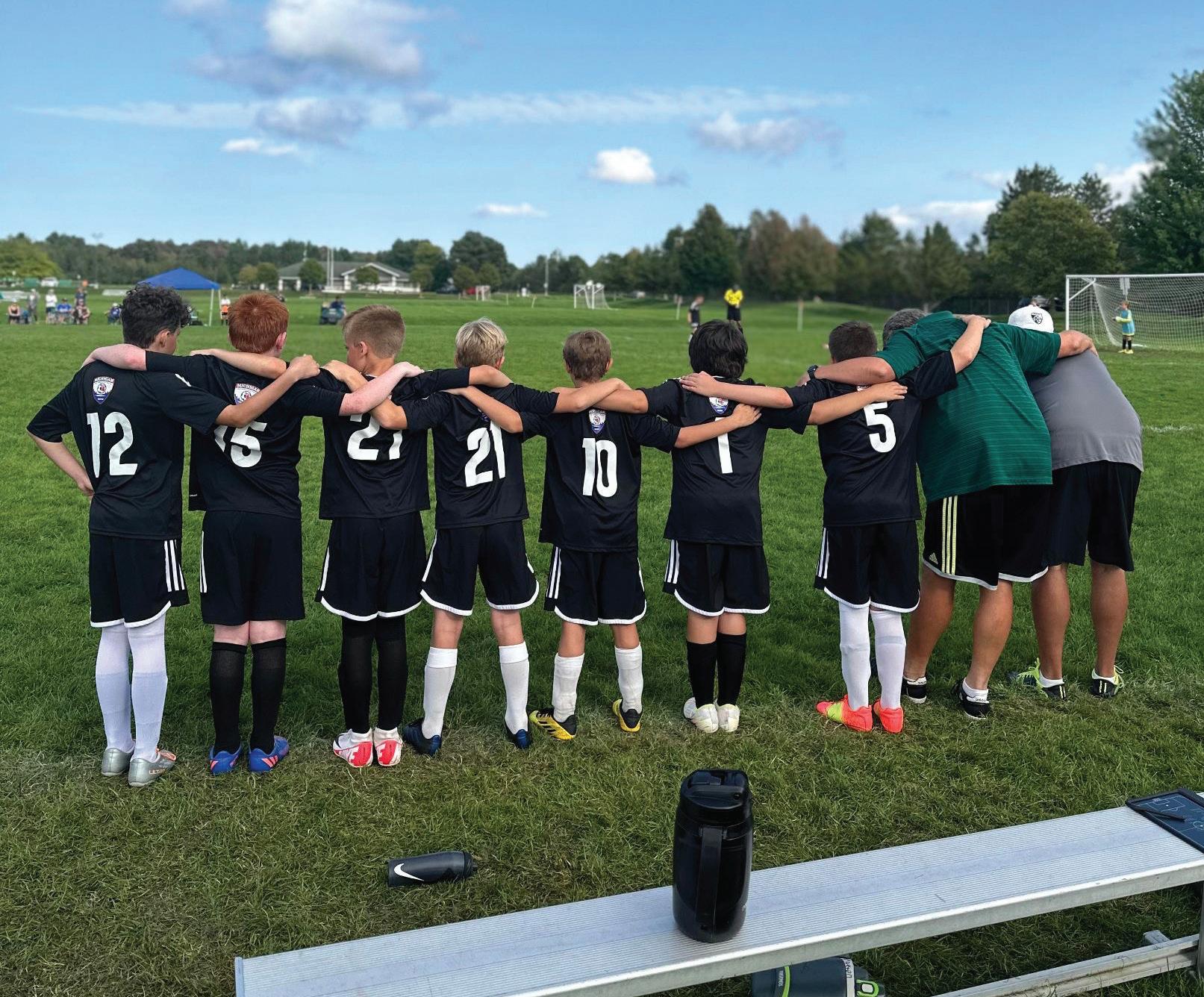



SUPPORT
1. Family support: Family life provides high levels of love and support.
2. Positive family communication: Young person and her or his parent(s) communicate positively, and young person is willing to seek advice and counsel from parent(s).
3. Other adult relationships: Young person receives support from three or more nonparent adults.
4. Caring neighborhood: Young person experiences caring neighbors.
5. Caring school climate: School provides a caring, encouraging environment.
6. Parent involvement in school: Parent(s) are actively involved in helping young person succeed in school.
EMPOWERMENT
7. Community values youth: Young person perceives that adults in the community value youth.
8. Youth as resources: Young people are given useful roles in the community.
9. Service to others: Young person serves in the community one hour or more per week.
10. Safety: Young person feels safe at home, at school, and in the neighborhood.
BOUNDARIES & EXPECTATIONS
11. Family boundaries: Family has clear rules and consequences and monitors the young person’s whereabouts.
12. School boundaries: School provides clear rules and consequences.
13. Neighborhood boundaries: Neighbors take responsibility for monitoring young people’s behavior.
14. Adult role models: Parent(s) and other adults model positive, responsible behavior.
15. Positive peer influence: Young person’s best friends model responsible behavior.
16. High expectations: Both parent(s) and teachers encourage the young person to do well.
CONSTRUCTIVE USE OF TIME
17. Creative activities: Young person spends three or more hours per week in lessons or practice in music, theater, or other arts.
18. Youth programs: Young person spends three or more hours per week in sports, clubs, or organizations at school and/or in the community.
19. Religious community: Young person spends one or more hours per week in activities in a religious institution.
20. Time at home: Young person is out with friends “with nothing special to do” two or fewer nights per week.
12 MARCH–MAY 2024 | YC MAGAZINE | www.tlc4cs.org 1 9 14
Coaches teach teammates to support one another
17
Bullock Creek students participate in a music competition
Youth volunteer at a fundraiser for a nonprofit
assets in action 40 DEVELOPMENTAL ASSETS
A family enjoys time together at a sporting event
If you or your child would like to submit a picture that represents one of the 40 Developmental Assets, please email jblewett@tlc4cs.org with a picture and the number of the asset the picture represents.
Not all pictures are guaranteed publication.
COMMITMENT TO LEARNING
21. Achievement motivation: Young person is motivated to do well in school.
22. School engagement: Young person is actively engaged in learning.
23. Homework: Young person reports doing at least one hour of homework every school day.
24. Bonding to school: Young person cares about her or his school.
25. Reading for pleasure: Young person reads for pleasure three or more hours per week.
POSITIVE VALUES
26. Caring: Young person places high value on helping other people.
27. Equality and social justice: Young person places high value on promoting equality and reducing hunger and poverty.
28. Integrity: Young person acts on convictions and stands up for her or his beliefs.
29. Honesty: Young person “tells the truth even when it is not easy.”
30. Responsibility: Young person accepts and takes personal responsibility.
31. Restraint: Young person believes it is important not to be sexually active or to use alcohol or other drugs.
SOCIAL COMPETENCIES
32. Planning and decision making: Young person knows how to plan ahead and make choices.
33. Interpersonal competence: Young person has empathy, sensitivity, and friendship skills.
34. Cultural competence: Young person has knowledge of and comfort with people of different cultural/racial/ethnic backgrounds.
35. Resistance skills: Young person can resist negative peer pressure and dangerous situations.
36. Peaceful conflict resolution: Young person seeks to resolve conflict nonviolently.
POSITIVE IDENTITY
37. Personal power: Young person feels he or she has control over “things that happen to me.”
38. Self-esteem: Young person reports having a high self-esteem.
39. Sense of purpose: Young person reports that “my life has a purpose.”
40. Positive view of personal future: Young person is optimistic about her or his personal future.



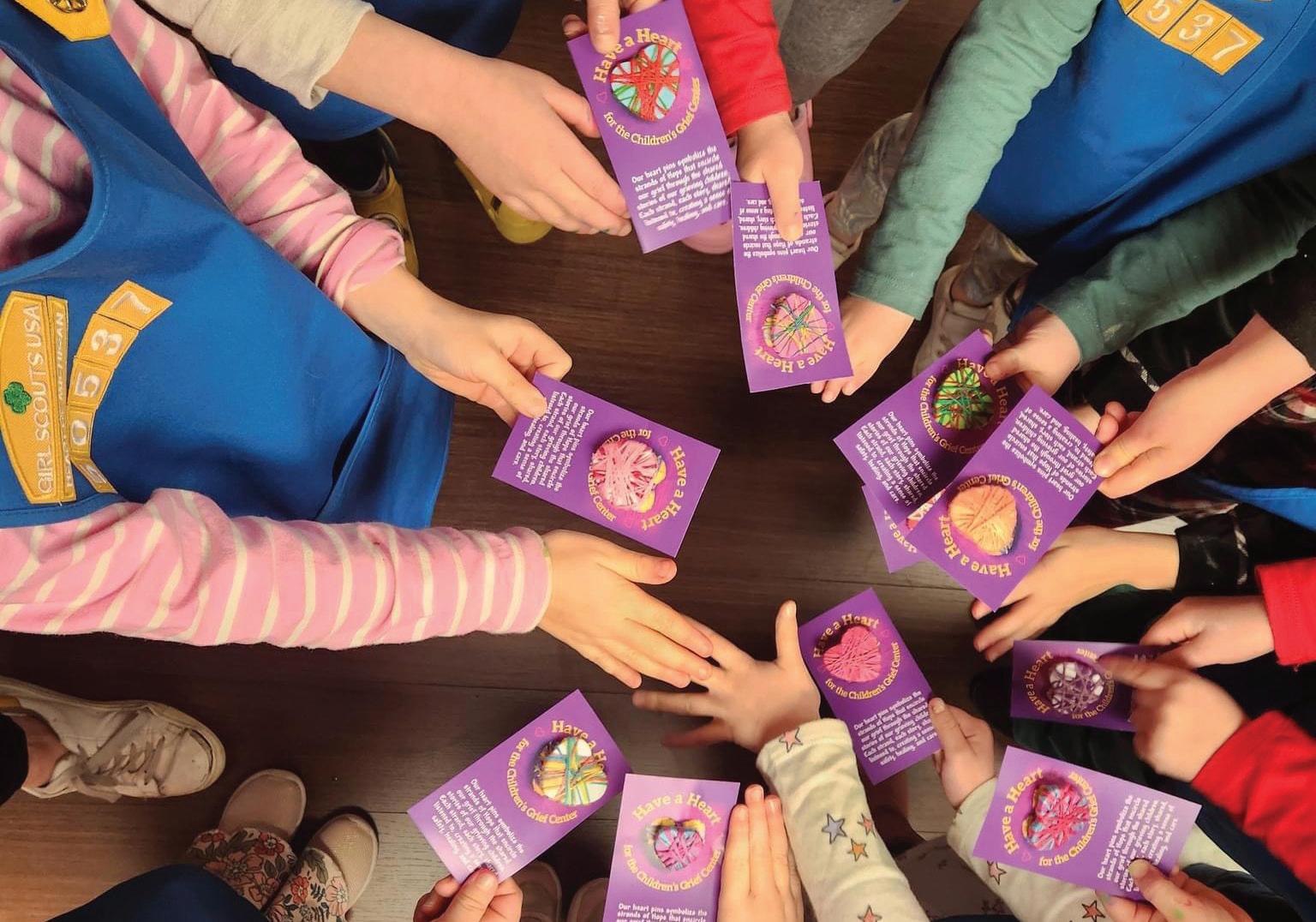
www.tlc4cs.org | YC MAGAZINE | MARCH–MAY 2024 13 26 24 38 32
Girl Scouts make hearts at Children’s Grief Center
Coleman celebrates their football players’ successes
Child learns about positive self-talk at Kids Day at the Mall
Father and son study a technical idea in robotics

FINE ARTS FOR MENTAL HEALTH the benefits of
By EMILY TURNER HANKINS
Stress levels are rising. It is difficult to find ways to deal with it all. For our children, this can manifest as tantrums, fights, and misbehavior. For teens and adults, pent up stress can lead to destructive behaviors or harmful choices like substance use. What can we do to help our children and ourselves manage emotions and find a positive outlet? The answer lies in The Arts.
The American Psychiatric Association explains that art holds the power to “reduce conflicts and distress, improve cognitive functions, foster self-esteem, and build emotional resilience and social skills. It engages the mind, body, and spirit in ways that are distinct from verbal communication.” It often feels scary or taboo to talk about conflicts, issues, or feelings. However, being able to scribble when angry, create a puppet show, or identify with a dance performance can be a safer outlet.
The therapeutic benefits of art do not necessarily have to come from a licensed art therapist or be in a formal setting. You do not need to attend a fancy gallery opening or be able to paint like Rembrandt or Van Gogh. The arts should not be for the select few, but for everyone. Young and old, rich and poor, experienced and unexperienced. By participating to the best of your ability, you and your children can benefit from Art.
So many of us (myself included) tend to limit our thinking to only including the visual arts. We go straight to thinking of pastel waterlilies hanging in gilded gold frames. However, “The Arts” includes so much more. The National Content Standards for the Arts used by schools nationwide, group the arts into five main categories: Visual Arts, Media Arts, Theater Arts, Music, and Dance.
Within these five categories there really is something for everyone. If going to a gallery and seeing the oil paintings of the great masters is your thing, go ahead and enjoy the Visual Arts. Media Arts can include anything from film making to collaging, so pick your own art adventure. Perhaps you love nothing more than singing along to Hamilton. If so, then the Theater Arts might be for you. If
The American Psychiatric Association explains that art holds the power to “reduce conflicts and distress, improve cognitive functions, foster self-esteem, and build emotional resilience and social skills. It engages the mind, body, and spirit in ways that are distinct from verbal communication.”
music is your jam, the more power to you. And if Dance sets your soul on fire, then dance, baby, dance. Maybe you enjoy a combination, and that is great too. The Arts play well together.
Once you know what kind of Art (or Arts) holds the most meaning to you or your child, you can work to set up experiences that are meaningful. The National Content Standards for the Arts provides four main ways to experience art: Creating, Performing/ Presenting, Responding, and Connecting. Creating is the default when we think of engaging in art. We often believe we must pick up a pencil and draw or choreograph a dance with scarves. While Creating holds value and benefits mental health, others do too. You can gain therapeutic benefits of Art by Presenting or sharing a creative work with others - it doesn’t even have to be your own. Responding and Connecting give us the chance to reflect on a work and examine our feelings about it. Pay attention to which of these feels the most meaningful to you or to your child.
When you are new to exploring the
therapeutic benefits of The Arts, it is important to cast your net wide and try a variety of Art practices and ways to experience them. Advocate for all kinds of art to be accessible in schools. Reach out to your community theatre and ask about show times, acting, set design, music, or costumes. Your nearest art museum will usually have classes in a wide variety of Art mediums for you or your child to explore. Volunteering as a tour guide or museum docent is a fabulous way to practice Presenting, Responding, and Connecting. Check with music stores in your area to see what classes or lessons they offer or what recitals are coming up. Public libraries also offer rich opportunities that often span a wide range of Art practices.
Once you get started, do NOT fall into the trap of judgement. Nothing shuts down creativity and it’s healing effects quicker than believing your Art is ‘not good enough.’ The best artists know that it is about the process and how your Art makes you feel, not about how it looks.
And remember, with Art practices being so wide-ranging, Art can be found almost everywhere. Don’t overlook the opportunity to engage with Art in unexpected places. When channel surfing you might happen across ‘Dancing with the Stars.’ Take a moment to Respond and Connect as a family. What do you notice about the music, the costumes, and the dancers’ form? How does the combination of these things make you feel?
If you are looking for something even deeper, keep your eye out for more targeted options. Art programs that use words like ‘discover,’ ‘connect,’ or phrases like ‘self-care’ usually strive to offer a healing element to their Art. Resources like the Expressive Art Institute, Adventures in Cardboard, or SoulCollage offer workshops and programs aimed specifically at healing through Art. Ask your current mental health provider(s) about incorporating Art into sessions or ask around about art therapists in your area.
By engaging in the Arts you can improve the mental well-being of yourself and your family. ■
www.tlc4cs.org | YC MAGAZINE | MARCH–MAY 2024 15
THE HARMS OF self-medicating
By NATURAL HIGH STAFF
Self-medication isn’t a new concept, but it’s getting a lot of attention lately. Recently released reports show a frightful number of adolescents have turned to self-medicating in an attempt to avoid depressive symptoms, numb their own pain, and escape feelings of hopelessness. With the accessibility of substances through social media, self-medication is on the radar of everyone concerned with adolescent health and wellbeing.
On some level, everyone self-medicates. Whether it’s turning to social media when feeling lonely, grabbing a box of cookies when feeling sad, or staying an extra hour to study or work when feeling anxious about your lack of achievement, we avoid our real feelings and their source and attempt to numb ourselves. Those solutions aren’t inherently harmful, perhaps they’re benign or even positive. The danger is when someone turns to substances like alcohol, marijuana, over-the-counter or prescription drugs, or worse to numb their big feelings.
Imagine a kid who’s feeling overwhelmed by feelings of hopelessness and turns to take over-the-counter painkillers to take away a bit of their pain. Or think about a student who struggles with ADHD and discovers that drinking alcohol helps them slow down and turn down the noise in their heads.
Did you know, one out of every six teenagers has used a prescription drug to get high or to change their mood? In the past year, two out of three teens who misused painkillers got them from a friend or family member. They weren’t out on street corners or searching on social media, they were within arm’s reach. That’s why parents need to be exceptionally vigilant around their home. Lock medications up and dispose of unused medications appropriately. Many communities have drop boxes to safely discard medications anonymously. Ask at the pharmacy.
One of the most dangerous realities of teen self-medication is the relatively recent risk of substances containing highly addictive and shockingly deadly fentanyl.
Did you know, one out of every six teenagers has used a prescription drug to get high or to change their mood? In the past year, two out of three teens who misused painkillers got them from a friend or family member.
Accidental fentanyl poisoning is killing kids in every community across the country. It’s “accidental fentanyl poisoning” because most are unaware fentanyl has been added to the substance they’re taking. It’s tasteless, odorless, and even consuming a tiny amount can be deadly. Shockingly, six out of 10 pills are laced with lethal amounts of fentanyl. And, unfortunately, 73% of teens have never heard of fake prescription pills being made with fentanyl, which is a problem that must be solved through education and awareness. We need to educate our kids right now.
Preparation is key to having a successful conversation with your kids.
Natural High has assembled a resource for parents titled Natural High’s Fentanyl Toolkit. It can be accessed at https://www.naturalhigh.org/fentanyl/. It contains a short documentary on the dangers of fentanyl.
Watching the film is an important Public Service Announcement (PSA) on its own, and research has shown that kids who also have opportunities to discuss the harms
of drug use with caring adults fare much better.
It’s recommended to watch the film and have a discussion. There are three easy steps:
1. Watch a six-minute life-saving PSA for youth on fentanyl.
2. Discuss the film using the discussion guide.
3. Share the film with everyone you know. Self-medication is a short-term solution that unfortunately creates long-term and more serious problems.
We need to give our kids broader and more relevant support by modeling emotional health when we’re feeling overwhelmed or hopeless, making conscious, good choices to address your feelings, and working through them in productive ways. It includes you having intentional, ongoing conversations with your kids about their own mental health, inquiring about their internal state, and reminding them of their options to work through whatever might be ailing them.
Kids need more than just warnings and education. They need caring adults engaging with them, opening up their personal lives, and sharing their struggles. They need access to resources that will help them navigate the complexities of teenage life and tangible support as they go through the adolescent years. They need to be taught the core foundations of emotional intelligence, become more self-aware and effective at managing their emotions, build positive relationships, and develop a variety of coping strategies for their big feelings. We’re in it for the long-haul as a parent, so we need to start with giving our child(ren) the facts about the risks of fentanyl poisoning.
See another article in the magazine about helping kids find healthy coping strategies that will guide them to healthy options to get them through emotional and physical challenges. A quick fix of using substances to deal with life’s ups and downs is not a long-term solution – for kids or adults. ■
16 MARCH–MAY 2024 | YC MAGAZINE | www.tlc4cs.org

NUMBERS
How do I set an appropriate curfew?
As kids move into their teenage years it’s important to give them enough freedom to learn how to make their own choices which helps them lead independent lives. Setting reasonable boundaries on their activities and time out with friends can help them make responsible decisions and develop healthy habits; curfews are part of striking that balance.
There’s no one right answer for setting a time, but there are strategies for setting realistic curfews.
HOW MUCH STRUCTURE DOES YOUR CHILD NEED?
If they struggle to make responsible choices without firm boundaries in place, a consistent time might work the best for them.
WHAT’S THEIR SLEEP SCHEDULE? If they have an early morning, an earlier curfew may benefit their health and productivity. According to the American Academy of Pediatrics, teenagers need about eight to 10 hours of sleep per day. Getting enough sleep is important for their mental and physical health, as well as helping them excel in school and other activities.
WHAT ARE THE PLANS? If they want to attend a special event that goes past their usual curfew, it may be reasonable to adjust their curfew.
Try getting their input on what they feel is a reasonable curfew based on the circumstances. If they feel they had a say they may be more willing to follow the curfew. If their proposed time seems unreasonable, let them know why and clearly state when they are expected home.
Whatever curfew is set it’s important to communicate clearly what the expectation is, what to do if they’re running late, and then hold them accountable. An example of a consequence may be cutting their usual curfew back by 30 minutes which they can earn back after proving they can stick to the new time.
If they do break curfew, it’s important to let them know that you’re happy that they arrived home safely, but that you were worried. As sometimes happens, worry comes across as mad. At that point it’s best to tell them you’ll talk about the consequences in the morning when you’re feeling calmer.
Just as in adulthood, circumstances happen that are beyond their control and they may have to break curfew, for example poor weather conditions that make it dangerous for them to drive. Setting the expectation to call before missing curfew rather than making excuses afterward prevents worry and confusion.

21
3
The number of years a person spends on the toilet

The length in inches of a giraffe’s tongue (so it can lick its ears) 18

The acres of pizza average Americans eat every day
800,000
The number of fan letters Mickey Mouse received in 1933


1460
The number of dreams an average person has each year
20 million
The weight in tons of an average iceberg

18 MARCH–MAY 2024 | YC MAGAZINE | www.tlc4cs.org
HAVE A QUESTION? jblewett@tlc4cs.org We cannot guarantee all questions will be published; however, we will do our best to respond to all questions submitted.



www.tlc4cs.org | YC MAGAZINE | MARCH–MAY 2024 19 COUNSELING, EDUCATION, SUPPORT We provide free crisis services and affordable counseling on a sliding fee scale to families and people of all ages. We also offer Youth Services in Midland County schools. Family Issues • Relationships • Bullying LGBTQ Support • Grief Counseling Substance Use • Pregnancy Support No matter what your concern, reach out. We can help. Family & Children’s Services 989.631.5390 • fcs-midland.org Exceptional care from your oral surgeon PROUD SPONSORS OF YC MAGAZINE Board-Certified Oral & Maxillofacial Surgeons: Dr. Richard J. Poupard Dr. Nicole Stehle Dr. Jen Beaudin 2 Convenient Locations: www.midlandomfs.com 6112 Merlin Ct. Midland, MI 48640 (989) 839-9979 4851 E. Pickard St. Mt. Pleasant, MI 48858 (989) 773-8065

HELPING KIDS FIND healthy coping skills
By NATURAL HIGH STAFF
Stress happens. It’s a part of life. A healthy one, in fact. Psychologists are quick to remind us that stress is neutral, if not a positive experience. Stressful situations cause us to be stretched and grow.
Kids experience stress — a lot. Try to remember or imagine what a typical teenager goes through on any given day. Pressure from friends, parents, teachers, and coaches. The constant threat of peer rejection. The feeling like they’re always behind. Those scenarios trigger big feelings which can be overwhelming to a kid who’s still figuring out life.
Stress is actually a response we have to things called stressors. Stressors are situations, interactions, or events that trigger a threat response in us. Stressors can be external events happening towards us or around us, or they can be internal feelings. They can also be non-events (think about when your paycheck doesn’t get deposited — that non-event has become a stressful situation!). We all respond differently to stressors. For one person they feel threatened when they feel like someone doesn’t like them. Another person might not give it a second thought.
There are two dynamics that everyone can learn to manage stress effectively:
1. Diagnosis: the ability to understand how you’ve been triggered, recognize what’s happening to you on the inside, and be able to identify the source of the stress.
2. Prescription: the ability to respond positively and productively to your own stress response. In other words, we’re talking about self-awareness and selfmanagement.
These are the critical skills one needs to be able to handle the complexities of life, especially when things are difficult.
This is where coping skills come into play. We can intentionally teach our kids effective coping skills so they can handle difficult situations or difficult feelings.
There has been great research to help us understand what happens internally when we feel triggered by a stress response: in a split second the chemical epinephrine gets
pumped into our brain, so our heart rate and blood pressure increases, muscles tense, and we start breathing quickly. Our entire biological system gets primed to GO — go fight, go run, or freeze. Key systems inside our bodies turn off, like critical thinking and reasoning, learning, creativity, and empathy.
When we’re in a stress response we can’t:
+ Think clearly
+ Handle complexity
+ Connect differing ideas or viewpoints
+ Recall our personal values or ambitions
+ Connect with others
+ Learn new concepts
Read through that list again, and consider what we go through, and what our kids go through, when experiencing stress. They can’t learn or make wise choices until they work through their stress cycle.
What if we learned to be more vigilant about our stress and learned how to respond with simple, quick actions? What if we modeled and taught these things to kids?
From the book Burnout: The Secret to Solving the Stress Cycle, authors Emily and Amelia Nagoski share seven simple coping strategies anyone can try when feeling stressed or overwhelmed:
1. Physical activity (30 min a day of exercise would be excellent, but even clenching every muscle in your body for a count of 10 will do wonders)
2. Deep, concentrated breathing for a couple of minutes
3. Have a positive social interaction with someone you enjoy
4. Laughter
5. Hug (for at least 20 seconds)
6. A good cry
7. Create something
Imagine if more teachers were equipped with this simple understanding as they designed their curriculum and lesson plans. Think about parents who learned to implement these simple tactics with their kids at home.
Dream with us about kids learning this about themselves and being guided consistently over time to pay attention to their stress response, taught simple strategies to manage it better, and praised when they took the initiative.
So, this week:
+ Carve out ten minutes to walk through coping strategies with your kid(s)
+ Show them the list above
+ Talk about what healthy, productive coping strategies work for you when you’re feeling stressed or struggling with big feelings
If you catch them practicing any of the strategies, give them specific praise and encouragement, and ask them how they felt before and after.
Coping skills help kids work through challenging emotions, feelings, or situations. “Natural High” is another word for coping skills, so if your kid already has one, great, and if they’re not sure, help them find one. A natural high is any activity they love to do that makes them feel good and does not involve drugs or alcohol. They don’t have to be an Olympic champion or a professional musician to engage in an activity meaningfully. Finding their natural high can be as simple as thinking about what they enjoy and making an effort to spend some time doing it.
Take these steps with your child. Have them:
1. List three activities they enjoy.
2. List three activities they would like to try for the first time.
3. Of the activities listed in 1 and 2, what is one that they can commit more time and energy toward?
4. Decide on a day and time to take their first step toward commitment. What is that day and time and what is the action item to get more involved?
Having a passion that makes them come alive is an incredibly effective coping strategy that pulls the rest of their life along towards flourishing. ■
www.tlc4cs.org | YC MAGAZINE | MARCH–MAY 2024 21

We
If

Top 10 Reasons to Foster a Teenager
We are able to tell you what we feel want, need, fear, and think You don t have to guess or change diapers!
We deserve love and security
You can teach us all kinds of fun and valuable things, like driving, budgeting, cooking, and cleaning
You can form lifelong relationships with us
We want a family and we are choosing you just as much as you are choosing us MDHHS-Pub-1265
You don't have to be married
We have so many gifts and talents You may learn new things from us too like technology, fashion and slang!
We may be sensitive, but we are resilient
We appreciate the small things family dinners, movie nights, one-onone attention
You can show us what is important in life, help us gain independence and start adulthood with hope
We need a champion You can be a part of the reason one of us goes to college or achieves something great
You don't have to live in or own a house

Children in foster care are just regular kids


22 MARCH–MAY 2024 | YC MAGAZINE | www.tlc4cs.org CHILD Your is COUNTING on YOU TIME The to INTERVENE is NOW RECOVERING YOUTH FUTURES
take the financial barrier out of treatment
your child is struggling with substance use, please call for a free evaluation. 989-832-6855
and
For more information speak to a Licensing Spec alist at the Michigan Department of Health
Human Services
Dispelling Three Common Myths About Foster Care
Call
855-MICH-KIDS
INHALANTS: what parents need to know
By BARBARA BESSETTE, Certified Prevention Specialist

Inhalants, also known as volatile substances, are chemicals that produce mind-altering effects when inhaled. These substances typically include household products or industrial solvents, such as glues, paint thinners, aerosol sprays, gasoline, and cleaning fluids. Common terms for inhalants include whippets, poppers, huffing, sniffing, or bagging.
When inhalants are inhaled, the chemicals are rapidly absorbed into the bloodstream through the lungs and quickly reach the brain, resulting in an immediate, short-lived high. Inhalants act as depressants, slowing down brain activity and producing a range of effects depending on the substance and dose. These effects can include euphoria, dizziness, hallucinations, impaired coordination, slurred speech, and loss of consciousness.
Inhalant abuse is a form of substance abuse that predominantly affects adolescents and young adults. Inhalants are relatively inexpensive and easy to access. According to Monitoring the Future, a nationwide survey done of 8th, 10th and 12th graders, 8th graders have reported the highest use of the three grades dating back to 1990. In fact, the percentage of use has consistently been double that of students in the 10th or 12th grades.
Inhalant abuse carries serious risks and can lead to numerous physical and psychological problems. Short-term effects of inhalant abuse may include nausea, vomiting, headaches, disorientation, and impaired judgment. In some cases, the toxic chemicals in inhalants can cause serious health consequences, such as damage to the brain, liver, kidneys, or bone marrow. Inhalant use can also result in sudden death due to cardiac arrest, asphyxiation, or accidents caused by impaired judgment and coordination.
Long-term inhalant abuse can lead to substance use disorder. Chronic inhalant use can also cause cognitive impairment, memory loss, and personality changes. Additionally, inhalants can have harmful effects on various bodily systems, including the respiratory system, as repeated inhalation can damage the lungs, leading to chronic respiratory issues.
Inhalant abuse is a dangerous practice and can have severe consequences on physical and mental health. It is important to recognize the signs of inhalant abuse, such as a strong chemical smell on breath or clothing, chemical-soaked rags or clothing, slurred speech, confusion, or changes in behavior. ■
www.tlc4cs.org | YC MAGAZINE | MARCH–MAY 2024 23
2024 is not just a year – IT’S YOUR YEAR FOR ADVENTURE!
READING ROAD TRIP 2024
Dive into the excitement as we embark on a thrilling journey with our theme: “Find Adventure at the Library.” Learn more at:
gadml.org/adventure
NEW LIBRARY APP
Sign in to your Library account, check out upcoming events, renew your items, place items on hold, and more!
SUMMER READING 2024
JUNE 10 - AUGUST 10. Join us at the Library for the Summer Reading Kickoff on Friday, June 11 beginning at 3:00PM!
*The last day to report reading minutes and pick up prizes that were earned throughout the Reading Challenge is August 10.


Library Hours: Monday - Thursday 9am - 7:30pm, Friday & Saturday 10AM - 5:00PM gadml.org | 1710 W. St Andrews Midland, MI 48640 | (989) 837-3430
1
2
3

Why dual enroll?
You can earn college credit while you’re in high school.
But there’s more to it than that:
• It’s a two-for-one deal. Dual enrollment classes can count toward high school graduation and college credit.
• Dual enrollment classes are usually paid for by your high school. You’ll have the potential to finish college early and pay less overall.
• College courses broaden your horizon, challenge you and help you dream big.
Delta’s credits transfer.
The college credits you earn as a dual enrolled student at Delta can transfer to many colleges and universities.
You also get the college experience while still in high school.
Tons of courses to choose from.
Dual enrolled students can earn up to 30 college credits. Early Middle College students can earn an associate’s degree with 60 transferable credits. Talk to your high school counselor for options that fit your interest.
Flexibility & Convenience
Courses are available at Delta’s main campus, Downtown Midland Center and online.
delta.edu/dual • dualenrollment@delta.edu • 989-686-9428 delta.edu/equity 23-035 (9/23)
Go-To Place
For Musculoskeletal Care
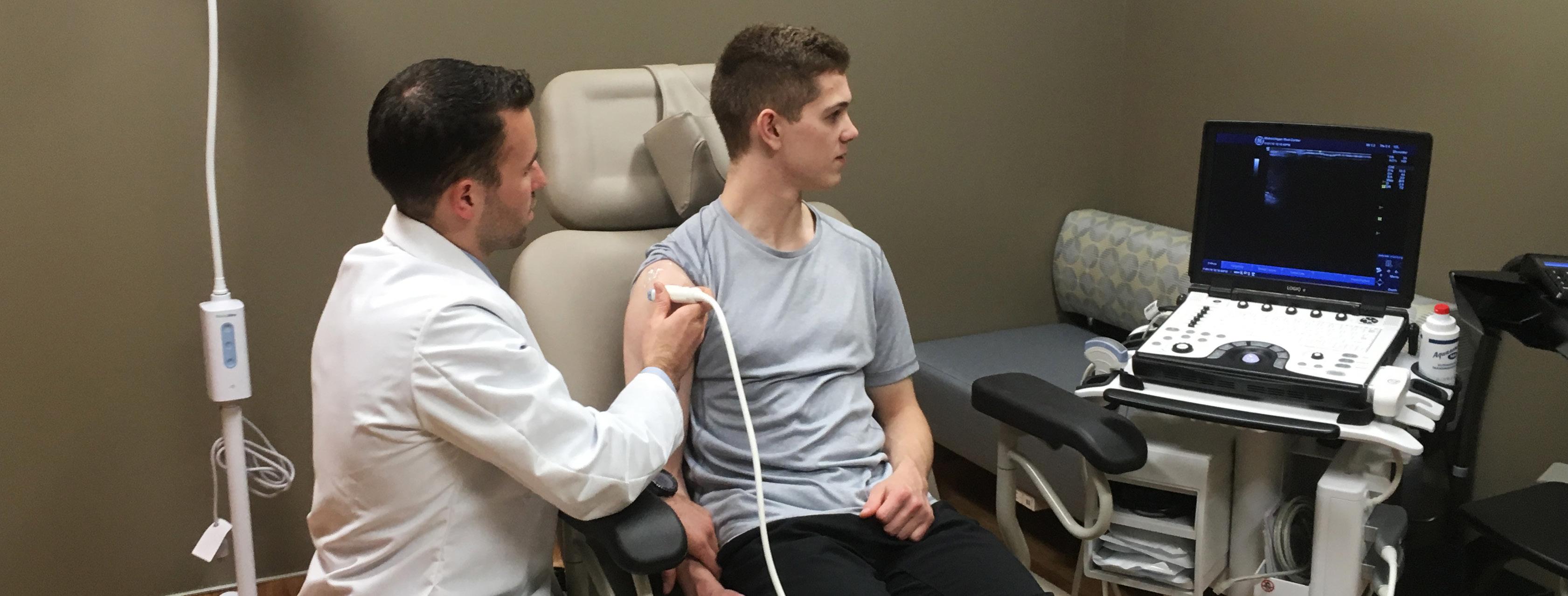
No matter what stage of life you’re in, the health of your muscles, bones and joints impacts your ability to get around and enjoy life. So, where do you go when you’re experiencing pain and discomfort? You don’t need to go far, because you have a go-to orthopedic surgery team ready to serve you at MyMichigan Medical Center Midland. Your go-to team has one goal in mind, to help you reach your highest level of function or performance. This experienced team offers advanced minimally-invasive and robotic surgery treatment options and includes experts in general adult and pediatric orthopedics, foot and ankle surgery, and hand surgery; as well as surgical and non-surgical sports medicine.
surgeon call (833) 923-3444
26 MARCH–MAY 2024 | YC MAGAZINE | www.tlc4cs.org
specialist
orthopedic
For help in scheduling an appointment with a non-surgical musculoskeletal
or
The Legacy Center for Community Success 2417 Abbott Road Midland, MI 48642








































































